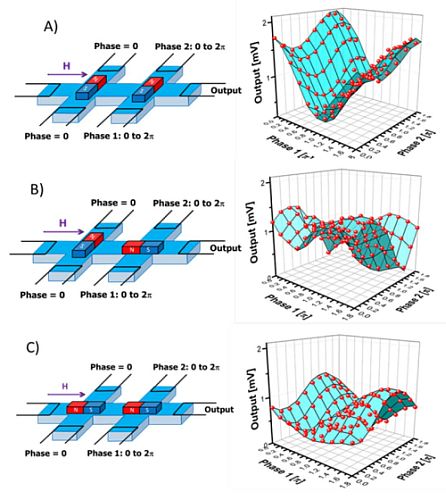Taking storage technology to the next level, researchers the University of California, Riverside Bourns College of Engineering and Russian Academy of Science have developed a holographic memory device, which would revolutionize the capacity for data storing and data processing proficiencies in e-devices.
The new storage device makes use of spin wave propagation than the optical beam. Compatibility with the current and upcoming e-devices along with its operation at a shorter wavelength makes spin wave a promising candidate for smaller electronic devices over the optical devices.
Through the experiments, the researchers have demonstrated that optical holographic techniques could be applied to magnetic structures to develop a magnonic holographic memory device. Hence, it leverages the magnetic data storage with the wave-based information transfer.
Khitun, the lead researcher claims that the study has opened up the passage for new logic, which would revolutionize the development of memory devices.
Holography
Holography is a technique, which facilitates the fabrication of three-dimensional images. It employs a laser, superposing of two waves, slitting of a wave, light intensity recording and suitable illumination of the recording. The resultant image is then able to shift its position and orientation along tilting to either side for example image that is made on paper currency.
The wave of holography was initiated during the late 1940s, at that time, electron microscopes were used but after a decade, with the coming of laser, optical holographic images took the center stage. Other fields took to the advantages of wave interference to produce holograms this led to the production of acoustic holograms, which could be seen in seismic applications and microwave holography used in radar systems.
Emerging Holographic Data Storage
Holography is a potential technology in terms of high-capacity data storage, very efficiently, it is able to write and read a huge amount of in an unprecedented manner.
Khitun’s research was focused around the spin wave-based logic circuits quite similar to the ones used in computers. However, the circuits would not replace the existing circuits in computers but would be complimenting to the current ones in performing certain tasks like recognition of image, speech and data processing.




